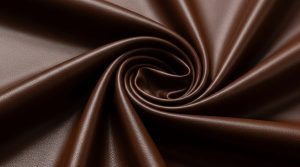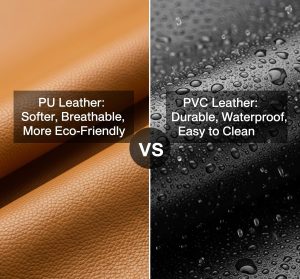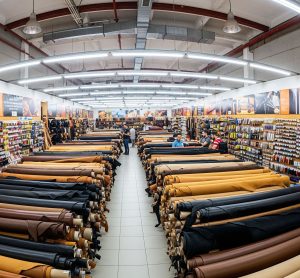
White leather fabric is a versatile material prized for its clean, elegant appearance, but its pristine look can be high-maintenance, showing dirt and wear easily. Dyeing it beige offers a warm, neutral tone that’s both stylish and practical, ideal for refreshing old items or customizing new projects like bags, jackets, or furniture upholstery. Beige’s earthy hue complements various aesthetics while being less prone to visible stains than white. However, dyeing leather fabric requires specialized techniques to ensure the color adheres evenly and the material remains soft and durable. This guide provides a detailed, step-by-step process to dye white leather fabric beige, drawing on expert methods to help you achieve professional results at home.
Why Dye White Leather Beige?
Dyeing white leather fabric beige has several advantages:
- Versatile Aesthetic: Beige’s neutral, warm tone suits fashion, home decor, and crafting, blending seamlessly with diverse styles.
- Practicality: Unlike white, beige hides minor dirt and wear, making it ideal for everyday items like bags or shoes.
- Customization: Dyeing allows you to match specific color schemes or revive faded pieces without purchasing new materials.
- Cost-Effective: Transforming existing leather is often cheaper than buying new beige leather fabric.
Leather dyeing differs from fabric dyeing due to leather’s unique structure, which is non-woven and often coated with protective finishes. Proper preparation and the right dye are critical to avoid patchy results or damage.
Materials Needed
Before starting, gather these supplies:
- Water-Based Leather Dye: Choose a dye formulated for smooth leather, ideally in beige, tan, or light brown. If unavailable, mix brown and yellow dyes for a custom beige shade. Brands like Fiebing’s or Zelikovitz Professional Pigment Dye are reliable.
- Leather Deglazer/Prep Solution: Products like ZeliPREP or Fiebing’s Dye Prep remove finishes and oils for better dye adhesion.
- Soft White Cloth or Sponge: Use lint-free cloths or sponge brushes for applying deglazer and dye.
- Gloves and Mask: Protect your skin and lungs from dye fumes.
- Plastic Drop Cloth: Cover your work surface to prevent stains.
- Leather Top Coat/Conditioner: A matte, satin, or gloss top coat (e.g., Acrylic Resolene) protects the dyed surface.
- Fine-Grit Sandpaper (Optional): For glossy or rough leather surfaces.
Mixing Tools (Optional): If mixing dyes, use small containers and stir sticks.
Step-by-Step Dyeing Process
Follow these steps to dye your white leather fabric beige:
1.Prepare the Leather
Proper preparation ensures the dye adheres evenly:
- Clean the Surface: Wipe the leather with a soft cloth dampened with mild soap and water or a leather cleaner to remove dirt and oils. Dry completely with a clean cloth.
- Deglaze the Leather: Apply a leather deglazer using a white cloth, working in small sections to remove protective finishes, conditioners, or tanning agents. This step is crucial for white leather, which often has a coated surface. Allow the leather to dry fully, which may take a few hours.
- Smooth the Surface (Optional): If the leather is glossy or has scruffs, lightly sand it with fine-grit sandpaper to enhance dye adhesion. Be gentle to avoid damaging the leather.
Test Preparation: Test the deglazer on a small, hidden area to ensure it doesn’t harm the leather.
2.Choose and Mix the Dye
Selecting the right dye is key to achieving a perfect beige:
- Opt for Water-Based Dye: Water-based dyes, like Zelikovitz Professional Pigment Dye, keep leather soft and provide even coverage, ideal for leather fabric.
- Select or Mix Beige: Look for a dye labeled beige, tan, or light brown. If unavailable, mix brown and yellow dyes to create a golden tan or beige shade. For example, Fiebing’s dyes can be mixed using basic color theory.
Test the Dye: Apply a small amount of dye to an inconspicuous area or a leather swatch. White leather typically accepts dye well, but testing confirms the shade and ensures no adverse reactions.
3.Apply the Dye
Apply the dye carefully for a uniform finish:
- Set Up Your Workspace: Work in a well-ventilated area, ideally outdoors, and cover your surface with a plastic drop cloth. Wear gloves and a mask.
- Apply Thin Coats: Using a sponge, soft cloth, or dauber, apply the dye in thin, even layers. Start with one direction (e.g., left to right) for the first coat, then switch directions for subsequent coats to ensure coverage. Apply 3-6 coats, depending on the desired depth of color.
- Dry Between Coats: Let each coat dry slightly (15-20 minutes) before applying the next to prevent pooling or unevenness.
Check Evenness: After the final coat, inspect for patchy areas. Apply additional thin coats if needed.
4.Dry and Cure the Leather
Allow the leather to dry completely:
- Air Dry: Let the leather dry for at least 24 hours in a cool, dry place. Avoid heat sources like hairdryers, which can cause cracking or uneven drying.
Flex the Leather: Gently flex the leather during drying to maintain its suppleness, especially for flexible items like garments or bags.
5.Seal and Finish
Protect the new color with a top coat:
- Apply a Top Coat: Use a leather top coat like Acrylic Resolene or Zelikovitz Professional Acrylic Leather Top Coat. Apply 1-2 thin coats with a sponge or cloth in circular motions. Let it dry fully between coats.
- Condition the Leather: After the top coat dries, apply a leather conditioner to keep the leather soft and prevent cracking. Use sparingly to avoid greasiness.
Safety Precautions
- Ventilation: Work in a well-ventilated area to avoid inhaling dye fumes.
- Protective Gear: Wear gloves and a mask to protect your skin and lungs.
- Surface Protection: Use a plastic drop cloth to prevent dye stains on your work area.
- Temperature: Ensure the air temperature is above 60°F (15°C) for optimal dye application.
Troubleshooting
- Uneven Color: Patchy results may stem from inadequate deglazing or thick dye coats. Reapply deglazer and use thinner coats.
- Wrong Shade: If the beige is too dark or light, adjust by mixing more dye and testing on a swatch before reapplying.
Dye Not Adhering: Ensure all finishes are removed with deglazer. If issues persist, lightly sand the surface and retry.
Aftercare and Maintenance
To keep your beige leather fabric vibrant:
- Clean Regularly: Use a soft cloth and mild leather cleaner to remove dirt.
- Condition Periodically: Apply a leather conditioner every 3-6 months to maintain suppleness.
- Avoid Sunlight: Store leather away from direct sunlight to prevent fading.
Conclusion
Dyeing white leather fabric beige is a rewarding DIY project that can transform your items with a fresh, elegant look. By carefully preparing the leather, choosing a water-based dye, applying thin coats, and sealing the color, you can achieve a professional finish. Testing the dye and following safety precautions ensure the best results while protecting the leather’s quality. Whether you’re updating a handbag or crafting a custom piece, this process lets you unleash your creativity and enjoy the timeless appeal of beige leather.







